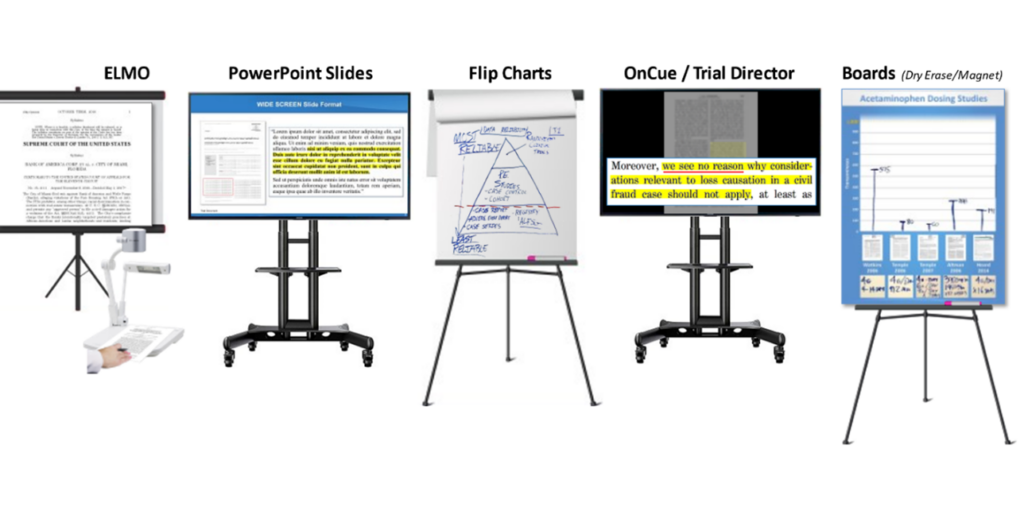Exactly How Trial Presentations Enhance Your Argument and Persuade Jurors
Trial discussions act as a crucial device for boosting lawful disagreements and convincing jurors. By integrating visual help, narrative frameworks, and emotional engagement, attorneys can create an engaging instance that reverberates on several levels. The strategic usage of visuals not just clears up complicated information but also catches jurors' attention better than words alone. Nevertheless, the art of narration plays a similarly crucial duty in changing accurate evidence into an engaging story, shaping jurors' perceptions - trial presentations. Understanding these components can substantially impact test results, raising the concern of how each part contributes to this detailed dynamic.

Relevance of Visual Aids
Aesthetic help play an important role in boosting the efficiency of trial discussions, as they can considerably increase target market engagement and retention of details. In the context of a trial, where jurors are tasked with handling complex info, visual help serve to streamline and clarify vital points. Graphes, graphs, and photos can convey information and concepts that might otherwise overwhelm or perplex jurors, enabling an extra simple understanding of the proof presented.
In addition, visual aids assist in maintaining juror interest throughout the process. By breaking the uniformity of verbal statement, these devices can punctuate important arguments, making them much more remarkable. Effective aesthetic help can also evoke psychological responses, which can be critical in encouraging jurors to align with the presenter's story.

Crafting Compelling Stories
A compelling narrative is necessary in test presentations, as it works as the foundation of effective persuasion. It enables lawyers to weave together truths, proof, and psychological elements into a meaningful tale that reverberates with jurors. This narrative structure allows jurors to comprehend the intricacies of the instance while directing them with the lawyer's debate.
To craft an engaging narrative, attorneys ought to concentrate on quality and comprehensibility. This involves establishing a clear protagonist-- typically the customer-- and outlining their trip via the events in question. Providing the truths in a rational series boosts comprehension and preserves interaction. Furthermore, making use of vivid descriptions can create mental images that help jurors visualize the events, making the narrative more memorable.
Furthermore, integrating key motifs throughout the discussion strengthens the core message and aids in retention - trial presentations. The narrative needs to not just communicate info but additionally stimulate a sense of justice, highlighting the stakes entailed. Inevitably, a well-constructed narrative cultivates a link between the jurors and the case, placing the attorney's argument as both reputable and engaging, consequently enhancing the likelihood of a favorable judgment

Involving the Jury Psychologically
Efficient court interaction pivots on the attorney's capacity to get in touch with jurors on a psychological level. This link can considerably influence jurors' understandings and their best decision-making. Using psychological appeals enables lawyers to humanize the situation, changing abstract legal ideas right into relatable experiences. By presenting real-life tales or testimonials, attorneys can stimulate empathy and empathy, cultivating a deeper understanding of the problems at risk.
Visual aids, such as photos or video clips, can further improve psychological involvement, providing jurors with vibrant depictions of the instance's human elements. Crafting a narrative that highlights the struggles and victories of the people entailed ensures that jurors see beyond the legal disagreements and acknowledge the human effects of their choices.
Moreover, tone and body language play an important function in communicating feeling. A lawyer's enthusiastic distribution can reverberate with jurors, enhancing their psychological financial investment in the instance. It's important to balance sob stories with factual evidence, guaranteeing that jurors feel obliged to act while remaining grounded in the truth. Ultimately, an emotionally involved court is extra most likely to be convinced, making emotional connection an important component of effective test discussions.
Structuring Your Discussion

The body of the discussion ought to be logically fractional into vital factors, each supported by engaging evidence. It is valuable to utilize narration methods to weave facts into a story that jurors can easily adhere to. Visual help, such as charts and video clips, can enhance understanding and engagement, aiding to highlight vital pieces of evidence.
Real-World Case Research Studies
Examining real-world situation research studies gives important insights into the art of test discussions and persuasion. The protection group effectively employed a technique that integrated top-level specialist testaments with multimedia presentations, which captivated jurors and eventually influenced their decision.
One more significant instance is the "McDonald's Coffee Instance," where the complainant's lawyers made use of visuals photos of the injuries received by Stella Liebeck. trial presentations. This raw aesthetic proof played a critical duty in sharing the extent of her burns, bring about a my sources substantial court Continued honor. Such instances show that impactful trial presentations frequently rest on the effective integration of visuals and narration to stimulate psychological actions from jurors
Moreover, the "Casey Anthony Trial" highlighted the significance of narrative coherence and credibility. The prosecution's failing to develop an engaging timeline decreased their persuasive power, underscoring the need of a well-structured discussion. Examining these cases reveals that effective trial presentations call for calculated planning, emotional involvement, and the capability to resonate with jurors' worths and beliefs.
Conclusion
Test presentations significantly boost disagreements and persuade jurors via the calculated use of aesthetic aids, engaging narratives, and emotional involvement. By simplifying intricate info and fostering links with the audience, these components create a remarkable and impactful experience. A well-structured presentation equilibriums emotional allures with accurate proof, eventually reverberating with jurors' values. The assimilation of these methods not just influences decision-making yet also emphasizes the significance of reliable communication in the court.